Special Report
Iconic Gadgets That Have Shaped Our Lives Since the 1950s
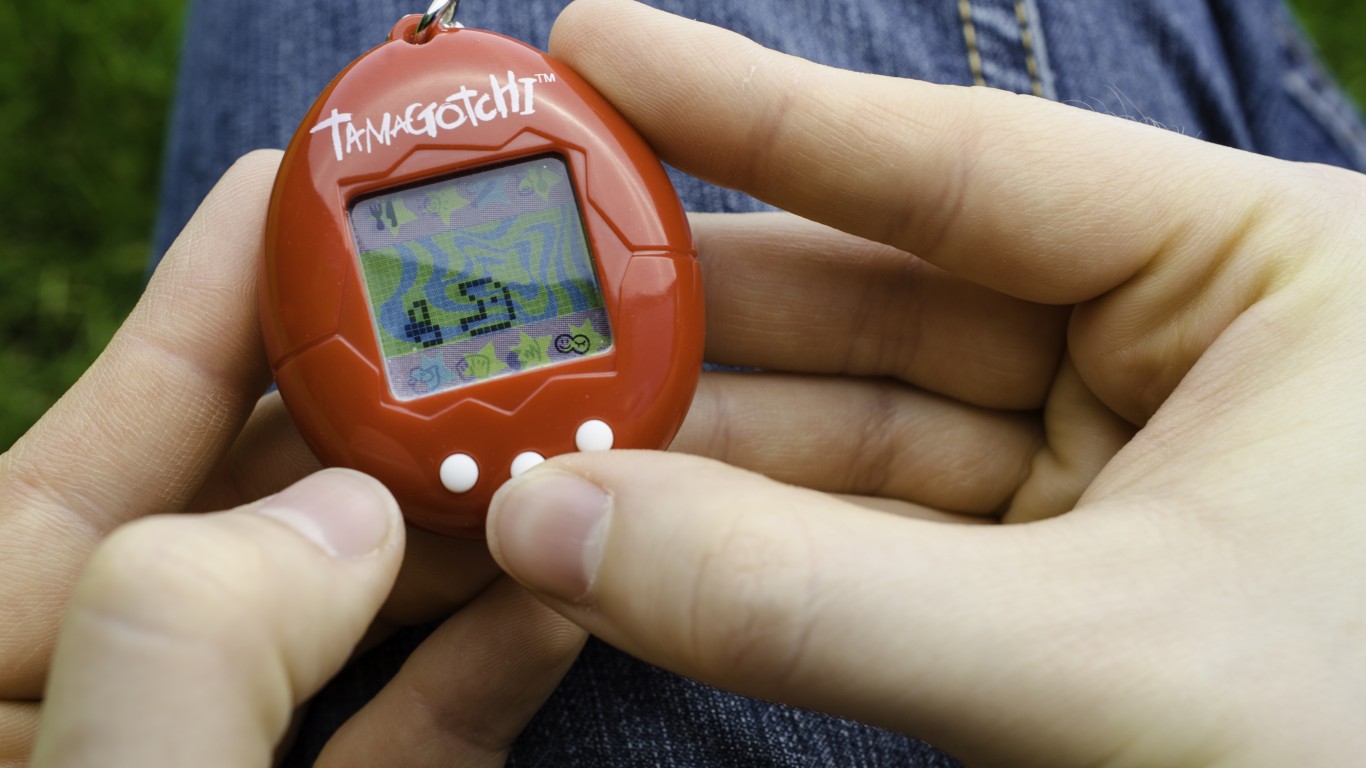
Published:

America’s tech industry has been thriving for decades. Driven by a desire for convenience, people have created some amazing gadgets that have changed everyday life.
Some of the products that were once a mainstay have become obsolete, replaced by the smartphone. Others were considered super cool and innovative, and even seemed like lifesavers.
24/7 Tempo compiled a list of pioneering technology that was invented almost every year since the 1950s. We reviewed technology company websites, reference materials, and industry and general media sources. We considered products that have significantly changed the way people perform everyday tasks, work, or communicate.
While some of the inventions on the list are out of commission, others have stood the test of time. They are so common we no longer even consider them revolutionary — here are 20 ancient inventions we still use today.
Click here to see the 44 iconic gadgets released since the 1950s

Transistor radio
> Year invented: 1954
You could see them everywhere in the 1970s. People used transistor radios to listen to music and the radio on the go. As Steve Wozniak, the co-founder of Apple, once said: “My first transistor radio… I loved what it could do, it brought me music, it opened my world up.”
[in-text-ad]
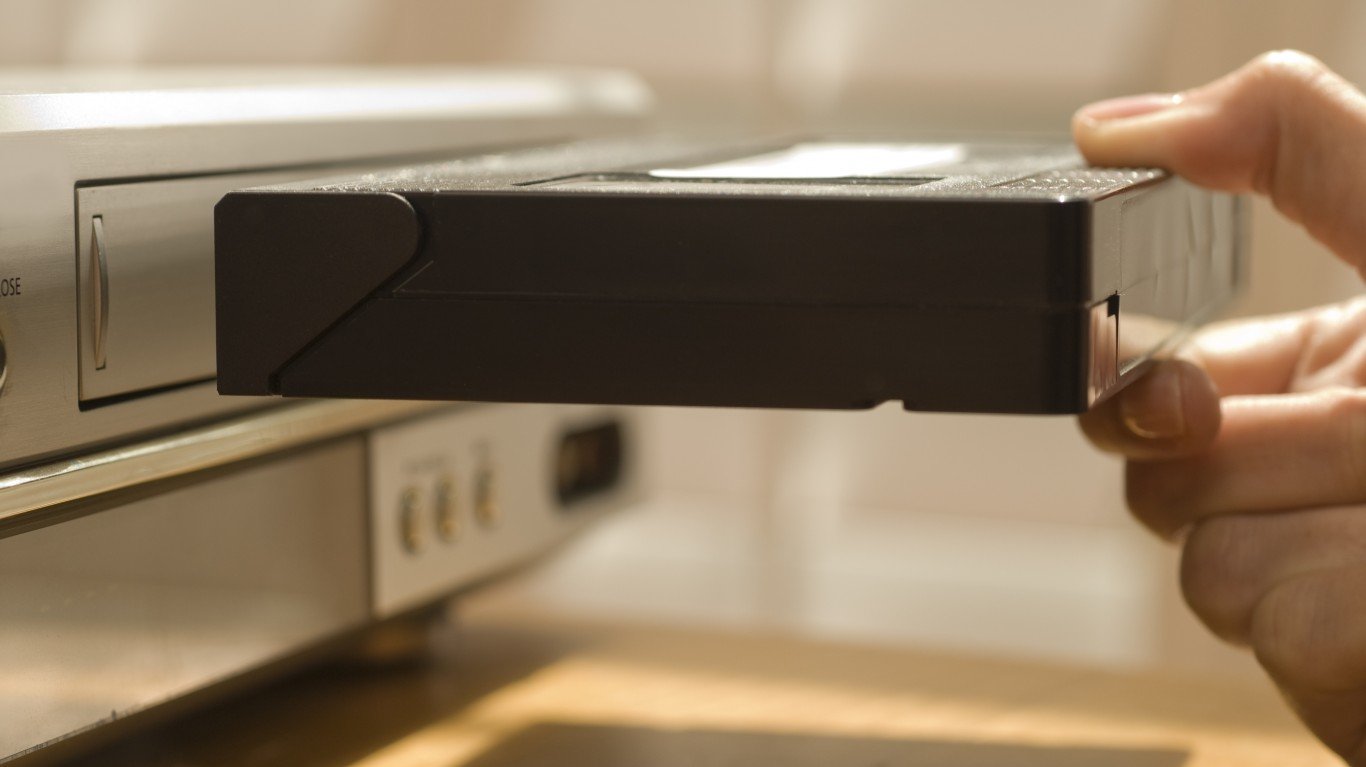
Videocassette recorder (VCR)
> Year invented: 1956
Video cassette recorders became almost obsolete after the emergence of DVD players. The rise of online streaming services killed what was left of them. The world’s last VCR was made in July 2016. At their peak in the 1990s, VCRs were selling 15 million units per year.

Jacuzzi
> Year invented: 1956
The Jacuzzi family emigrated from Italy to California in the early 1900s. They worked in the agriculture sector, improving aviation devices and water pumps. They invented the submersible pump, which was the first of its kind in the world. When a family member developed arthritis, the brothers created a portable hydrotherapy pump, which was the first type of Jacuzzi.
[in-text-ad-2]
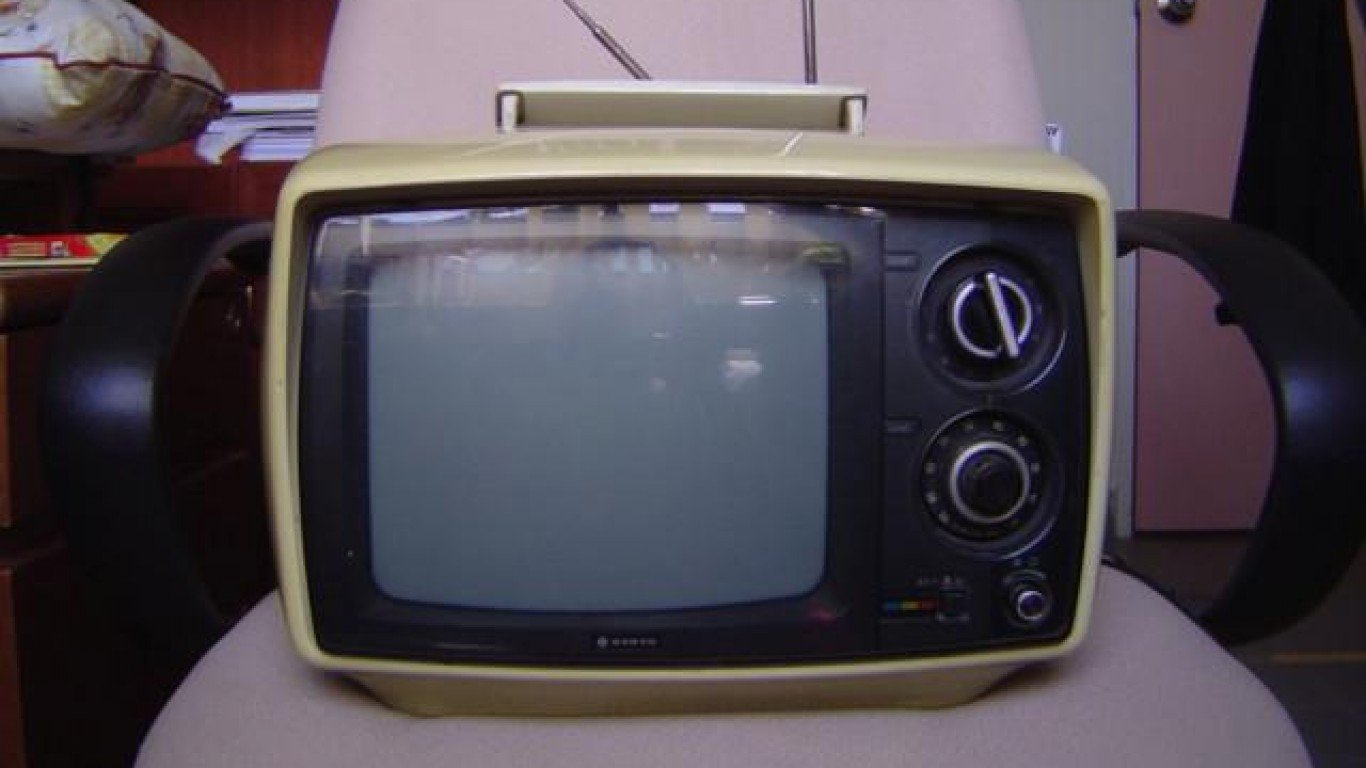
Portable TV
> Year invented: 1960
Portable televisions were never as big of a hit as, say, the Walkman, because of their limited number of channels. They were used in the 1960s and 1970s. Sony was the first company to mass-produce the device and put it on the market. It was called Sony Watchman.
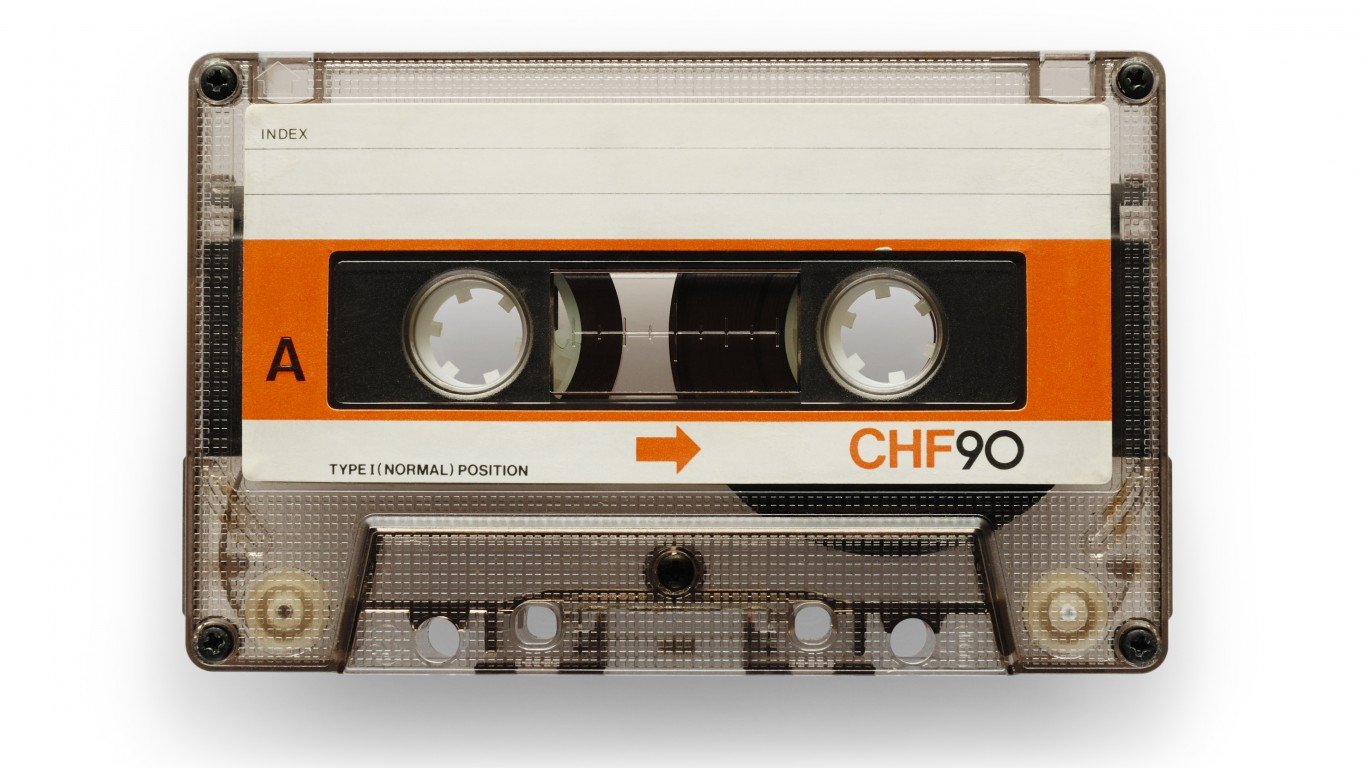
Cassette tape
> Year invented: 1962
The first audio cassette, most commonly known as the tape, came out in 1963 — and for the first time anyone, not just sound engineers, could make recordings. Cassette tapes, though certainly not as popular as during their heyday in the last century, are not dead. For nostalgic or artistic reasons, some people prefer them to downloads.
[in-text-ad]
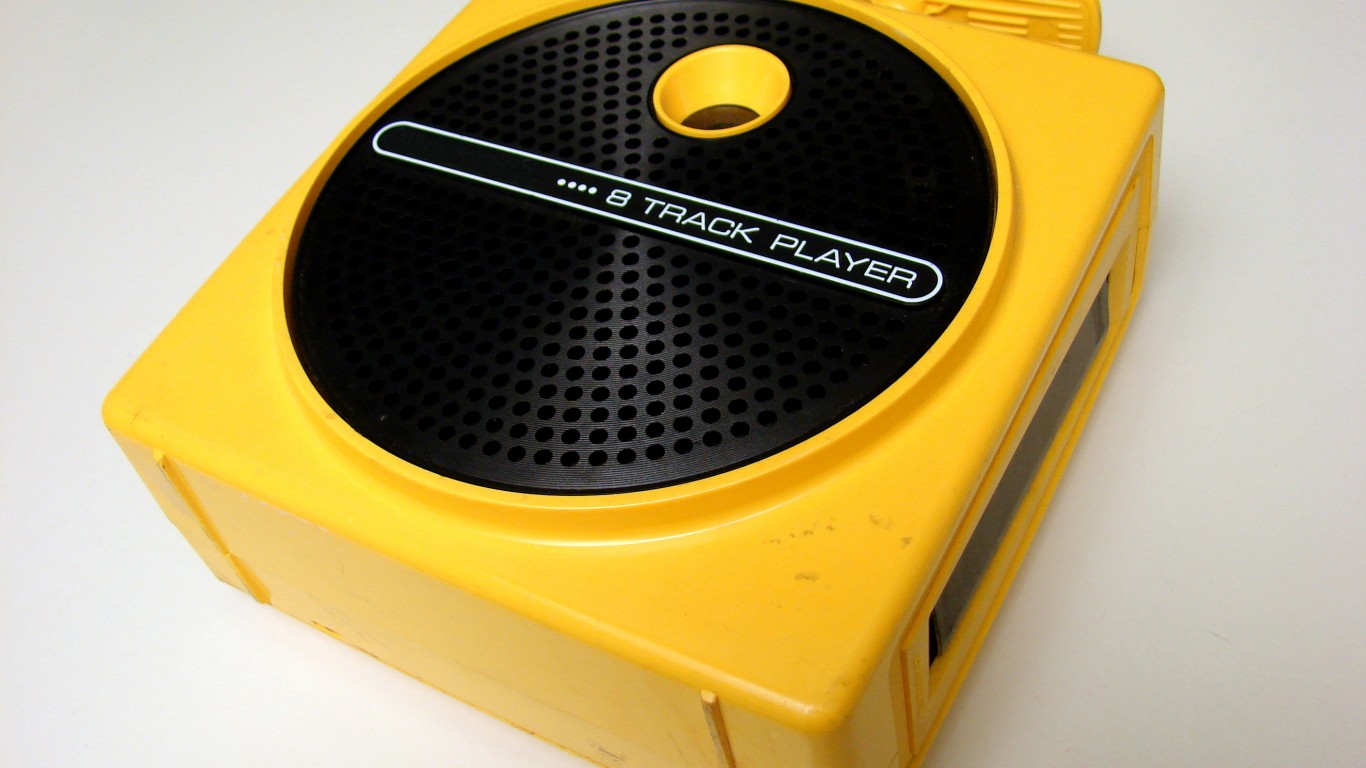
8-track
> Year invented: 1964
Stereo 8 was the official name, but most people, if they still remember it, know it as the 8-track tape. This is what millions of Americans used in the 1970s to listen to music on the go. Then the cassette tape took over, and by the 1990s the 8-track tape was pretty much an antique.
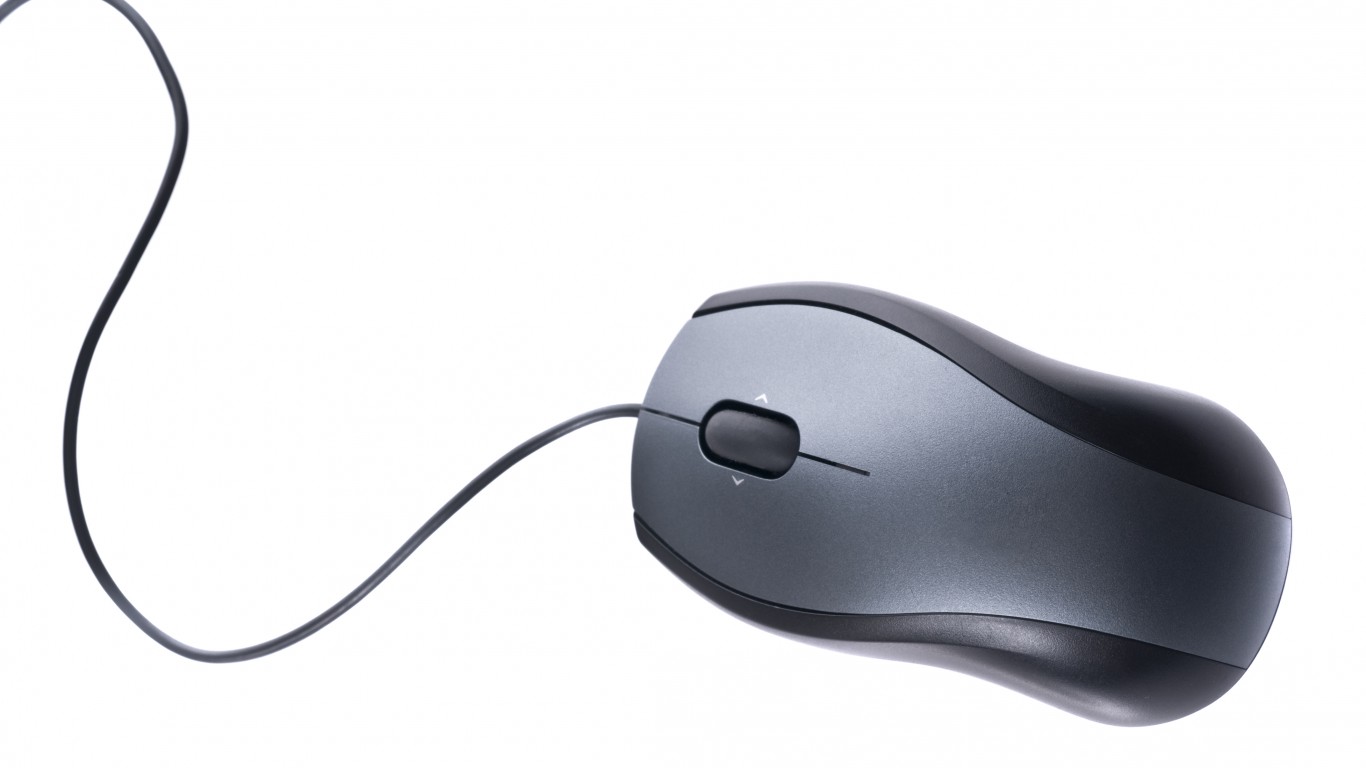
Computer mouse
> Year invented: 1964
While searching for a way to increase interaction with onboard computers and allow users to perform tasks like manipulate data, NASA and Stanford researchers developed the first mouse.
Wang calculator
> Year invented: 1966
The Wang calculator revolutionized electronic calculators. Invented in the late 1960s, it made it possible for people to do complicated math, including square root and raising numbers to powers. They looked like mini-computers.
[in-text-ad-2]
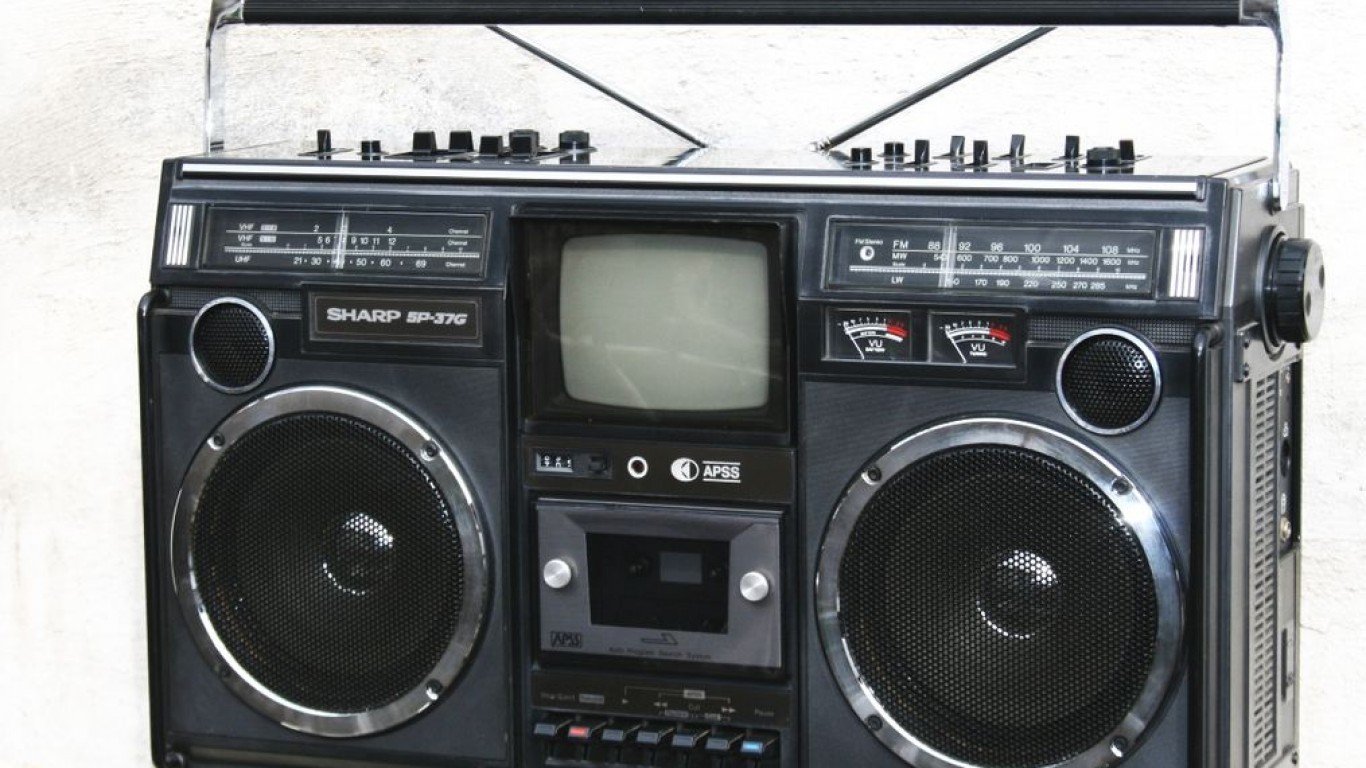
Boombox
> Year invented: 1969
The boombox is a portable radio cassette deck with speakers. It was created by Philips, a tech company, in 1969 in the Netherlands. A CD player was included in the 1980s. You can still buy a Boombox online, though most of the ones available are much smaller than the original.

Wireless headsets
> Year invented: 1970
Along with two airline pilots who’d invented a prototype of a wireless headset, NASA built a light, hands-free communication system that would allow astronauts to communicate with teams on Earth. The technology was utilized in the Mercury and Apollo missions.
[in-text-ad]
Pocket calculator
> Year invented: 1970
The first tool able to do mathematical computations was invented thousands of years ago. Digital calculators as we know them today were created in the 1970s. A company in Japan developed the first digital pocket calculator in 1970. The device was slowly phased out after the invention of mobile phones.
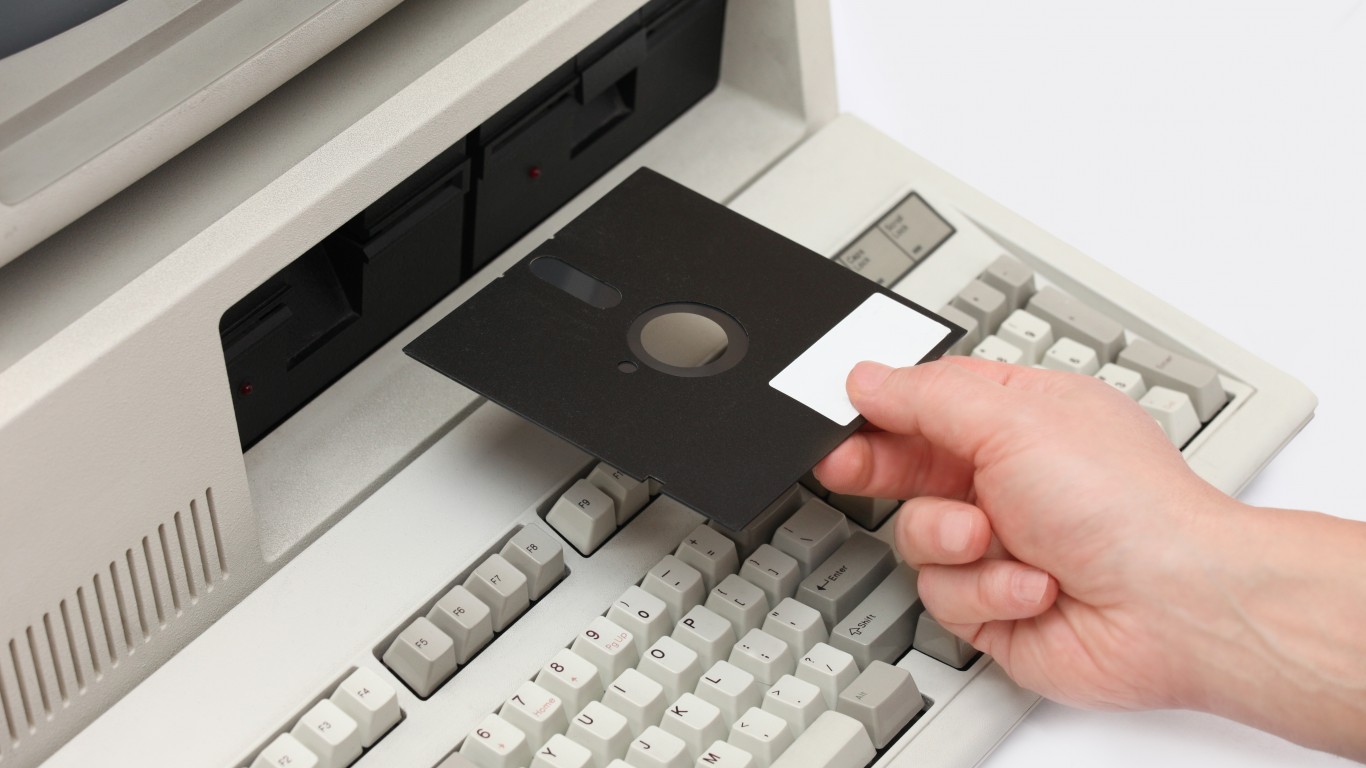
Floppy disk
> Year invented: 1971
Way before the Cloud, thumb drives, and other portable memory devices, there was the floppy disk drive. Now basically an antique, it was popular in the 1980s and 1990s. As is the case with most personal computing devices, the memory has increased with time. In 1991, for example, some could hold up to 2.8 MB, which is about one or two photo attachments. The official end of the floppy disk came in 2007 when PC World stopped selling them. Just a decade earlier, over 2 billion were in use.
[in-text-ad-2]
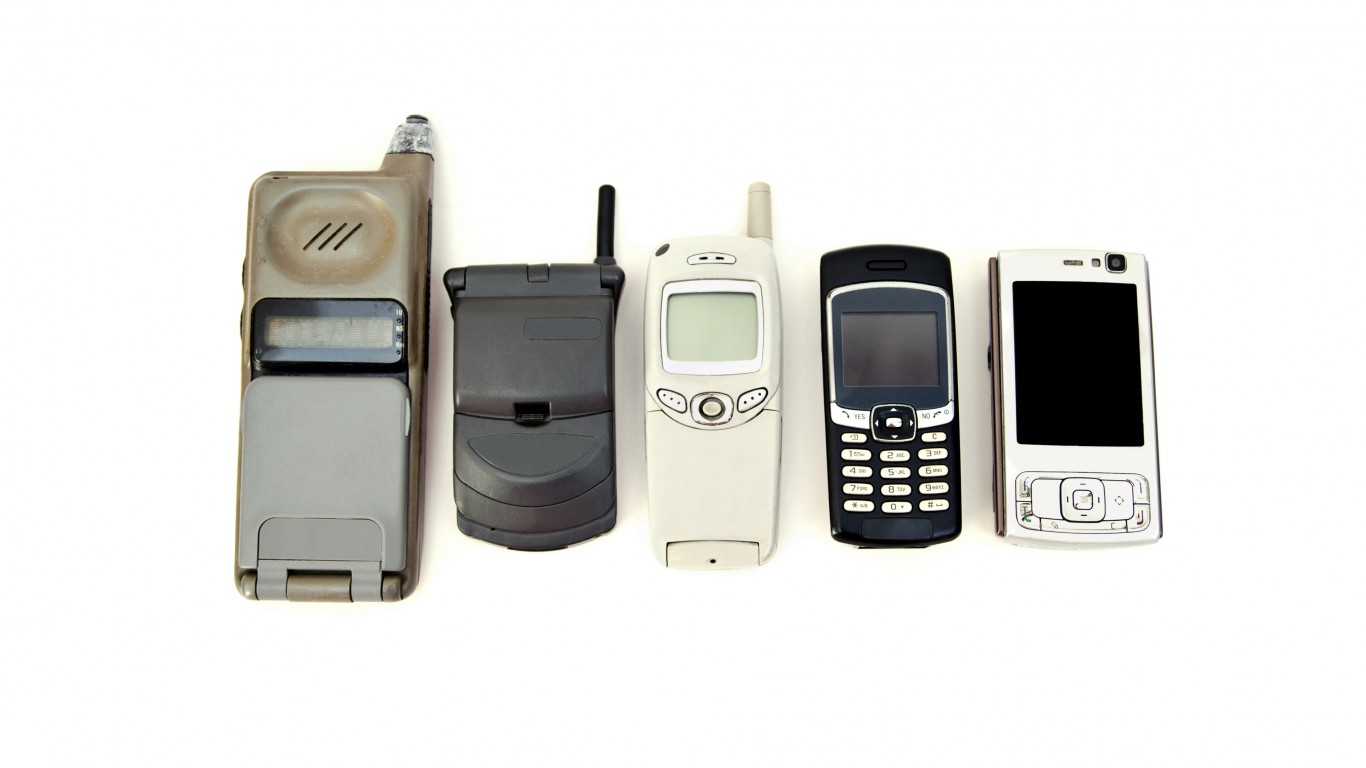
Cell phone
> Year invented: 1973
Modern life is probably unimaginable today without a cell phone, which, as a smartphone, has become a calculator, a navigation system, a camera, an alarm clock, just to name a few of its functions. The very first mobile phone was introduced in 1973. On April 3, a senior engineer at Motorola called another communications company to tell them he was talking on a mobile phone. The phone weighed more than 2 pounds. It took more than 10 hours to charge and the battery lasted long enough for a 30-minute call.
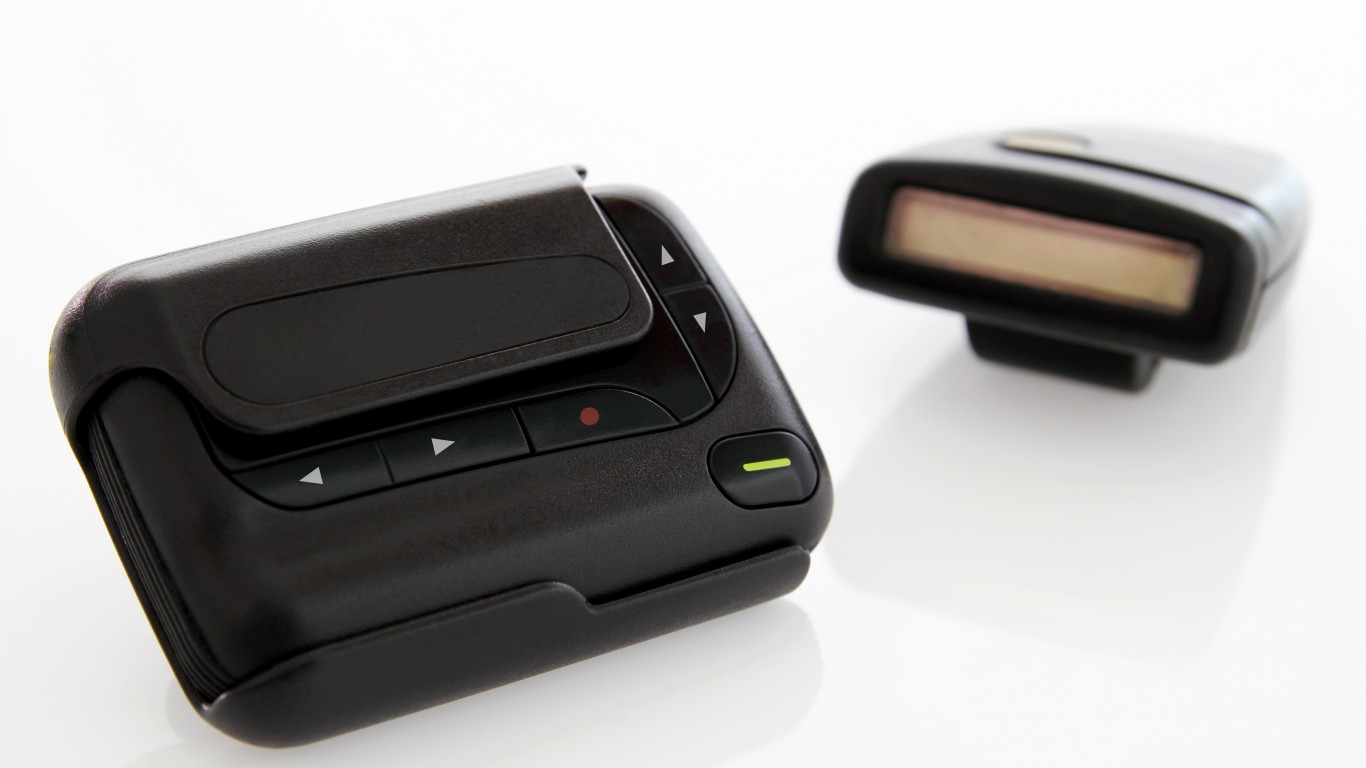
Pager
> Year invented: 1974
Before cell phones went mainstream, people used pagers, also called “beepers,” when they needed to reach someone right away. If you have ever watched a medical drama, you’ve seen a doctor being paged, checking the mini radio frequency device, and suddenly running away. A call or an email is forwarded to the pager; a message comes in with a number to call. Although hardly used anymore, pagers remain one of the most reliable forms of communication available, and are still preferred by some doctors. There is no delay in delivery, the network doesn’t get overloaded, and there are no dead zones.
[in-text-ad]
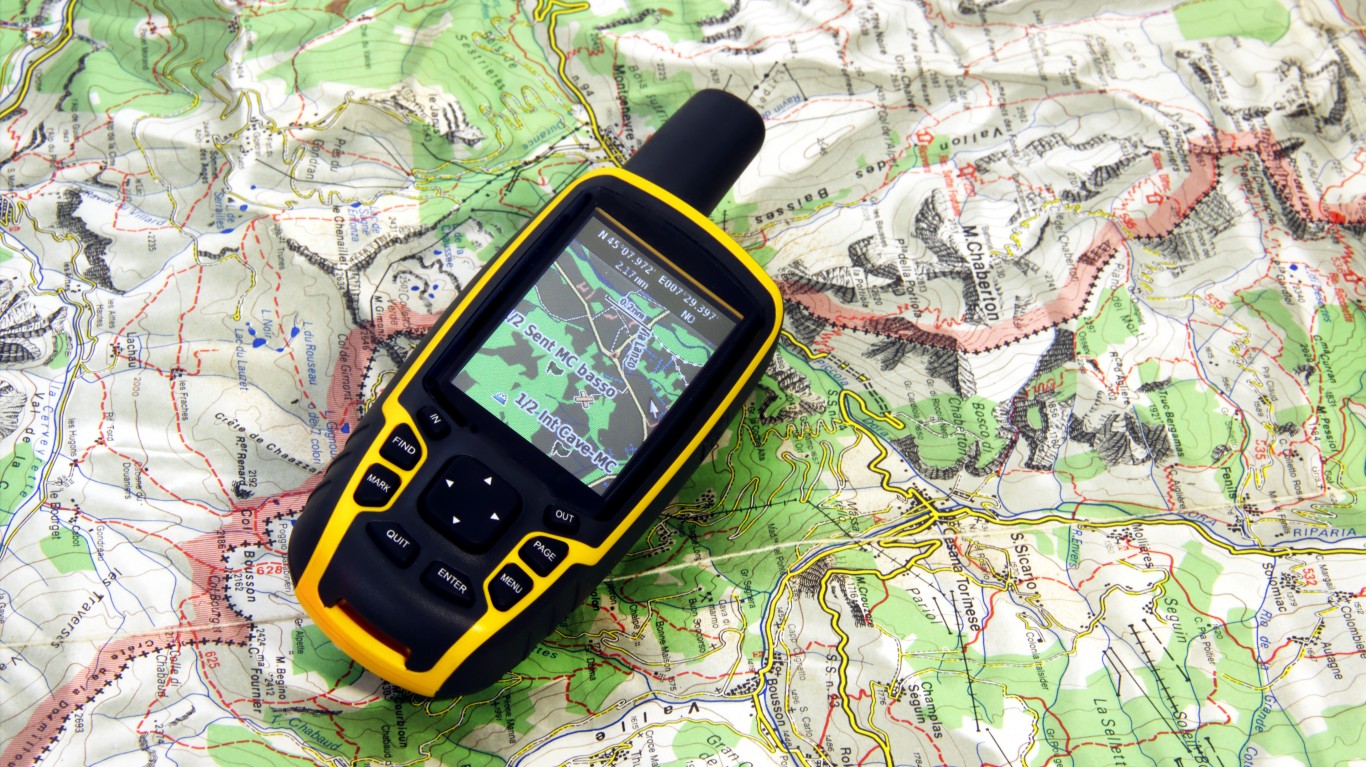
GPS
> Year invented: 1974
You may still have one in the back of your truck, just in case, but you probably haven’t used it in years. GPS, which stands for Global Positioning System, is a satellite-based navigation system owned by the U.S. Government and operated by the U.S. Air Force. Portable GPS devices became mainstream in the United States in 2005 or 2006. Before then, personal navigation was more popular in Europe and Asia. Americans preferred maps or printed directions from point A to point B. Smartphones have taken over that function as well.
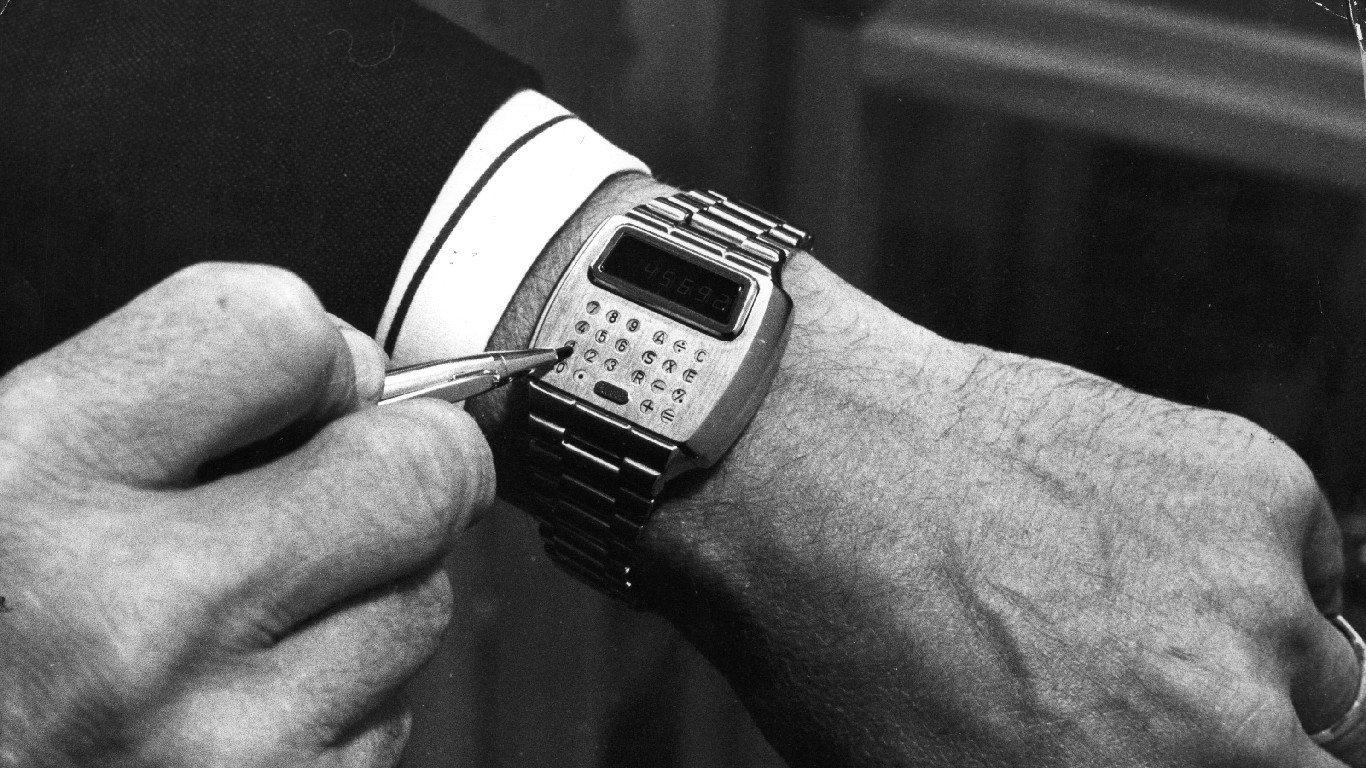
Calculator watch
> Year invented: 1975
People have been trying to make the watch more than just a watch for decades. Before it was a phone, it was a calculator in the 1980s. It was a very popular device among tech savvy people. Even Marty McFly from “Back to the Future” wore one.

Personal home computer
> Year invented: 1975
The first personal computers did not look anything like the PCs you see in stores today. Technically, the first personal home computers, which were invented in 1975, were kits. You got the parts — keyboard, power supply — and put them together.
[in-text-ad-2]
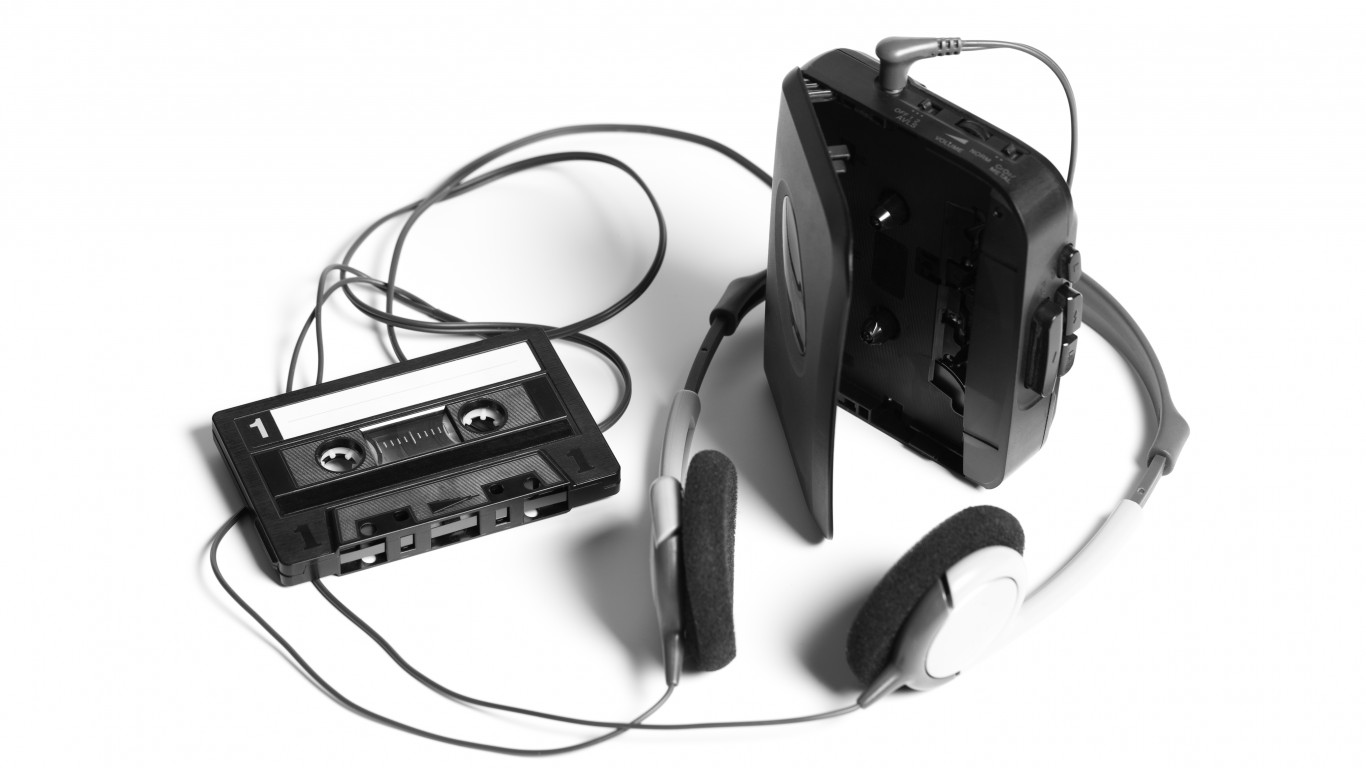
Walkman
> Year invented: 1979
Remember when rewinding and fast forwarding took longer than an instant? Walkman players, which played cassette tapes, were the thing in portable music, selling 400 million devices, way before the iPod. (Kids these days can’t handle them at all; they find them hard to operate.) Cassette tapes, though certainly not as popular as during their heyday in the last century, are not dead. For nostalgic or artistic reasons, some people prefer them to downloads.

DustBuster
> Year invented: 1979
During the Apollo moon landings, NASA partnered with Black & Decker to invent various battery-powered tools for drilling and taking rock samples in space. This led to the creation of the ultra-light, compact, cordless DustBuster.
[in-text-ad]

CD
> Year invented: 1980
CD album sales in the United States peaked between 1997 and 2001. As music streaming services slowly took over, CD sales declined and have been on a steady downward trend since 2004. You can still find CDs in some music and tech stores, but they are no longer the norm. Even giants such as BestBuy started pulling them from their stores.

Laptop
> Year invented: 1981
Most historians with an interest in technology say the first truly portable computer was the Osborne 1, which was invented by software publisher Adam Osborne in 1981. It weighed about 24 pounds and cost almost $2,000. The screen was about 5 inches. The laptop had a modem port, two 5 ¼-inch floppy drives, a large collection of bundled software programs, and a battery pack.
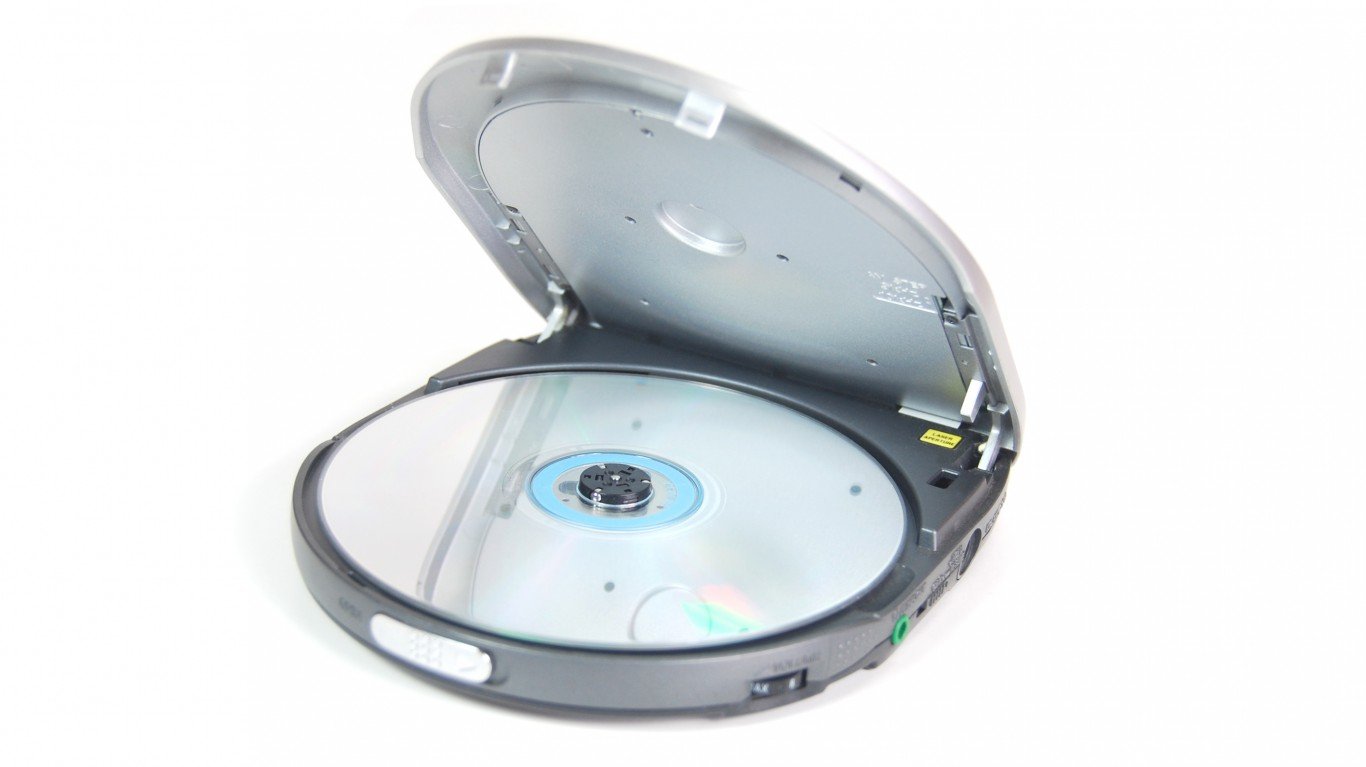
Discman player
> Year invented: 1984
Portable CD players were first invented in 1984 by Sony and really took off in the mid-1990s. The Discman was even renamed the CD Walkman. By 1998, Sony had sold about 50 million of the devices. If you liked to listen to music on the go you had one of them. Compared to what’s available today, some may think Discman players were too limited because you had to know what music you wanted to listen to and carry that CD. What if suddenly you felt like listening to something else?
[in-text-ad-2]
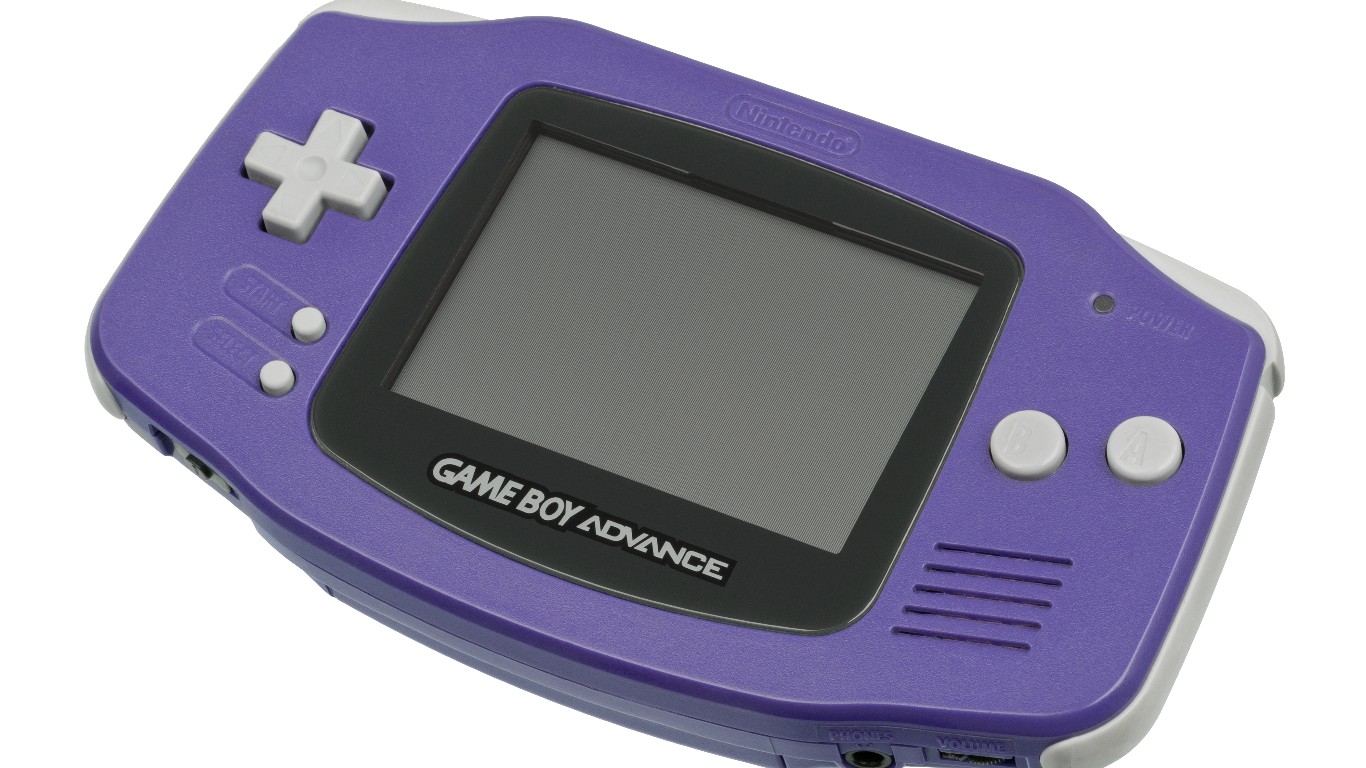
Nintendo Game Boy
> Year invented: 1989
Who can forget Super Mario. Tetris, the Pokemon series, and other popular games? The Game Boy allowed users to switch between games. How great was that? Even though it wasn’t the original device to allow people to change cartridges, it was the most popular one. Game Boy and its update, Game Boy Color, sold more than 118 million units until they were discontinued in the 2000s.
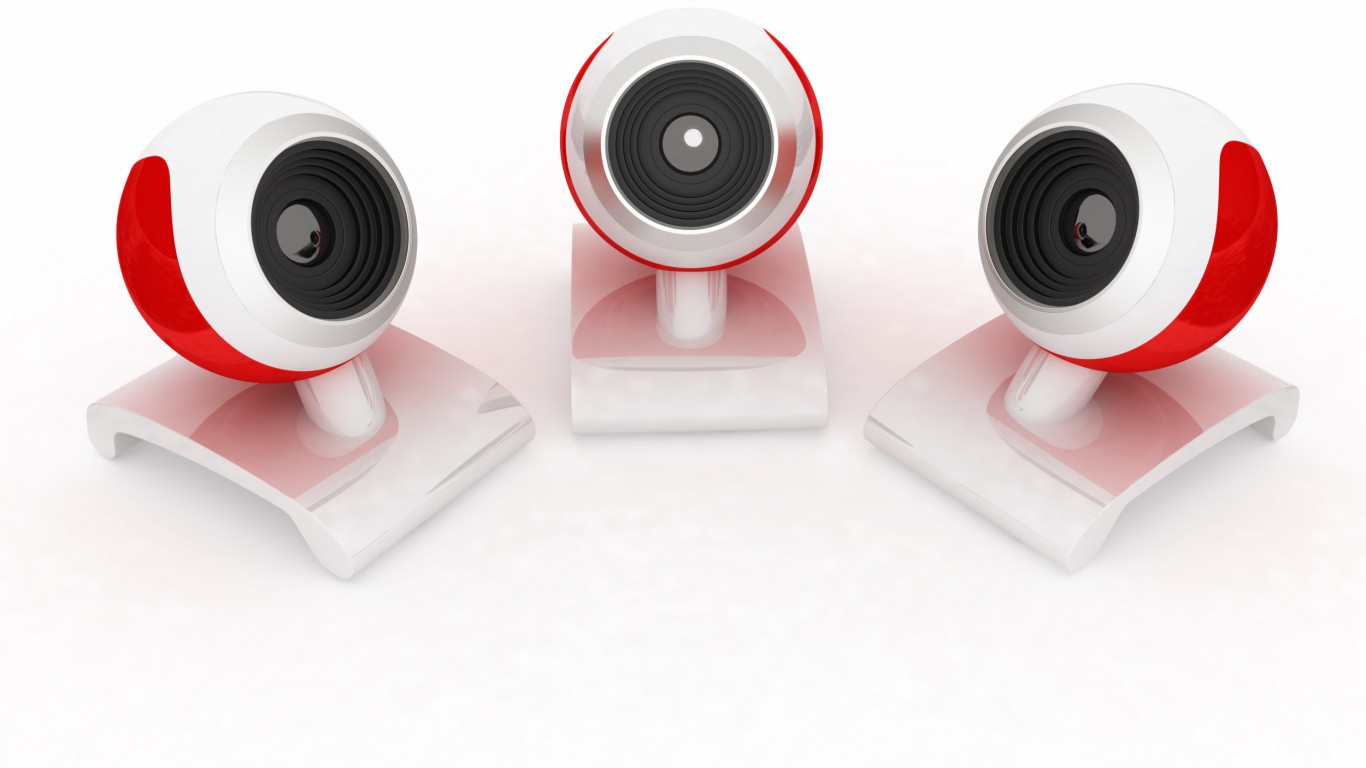
Webcams
> Year invented: 1991
Webcams were invented in 1991 by a team of Cambridge University researchers who wanted to find a way to remotely monitor the coffee pot in the computer science department. They just wanted to be able to tell when it was empty so they wouldn’t go on a coffee break for nothing. The first digital camera was wired to their computers.
[in-text-ad]
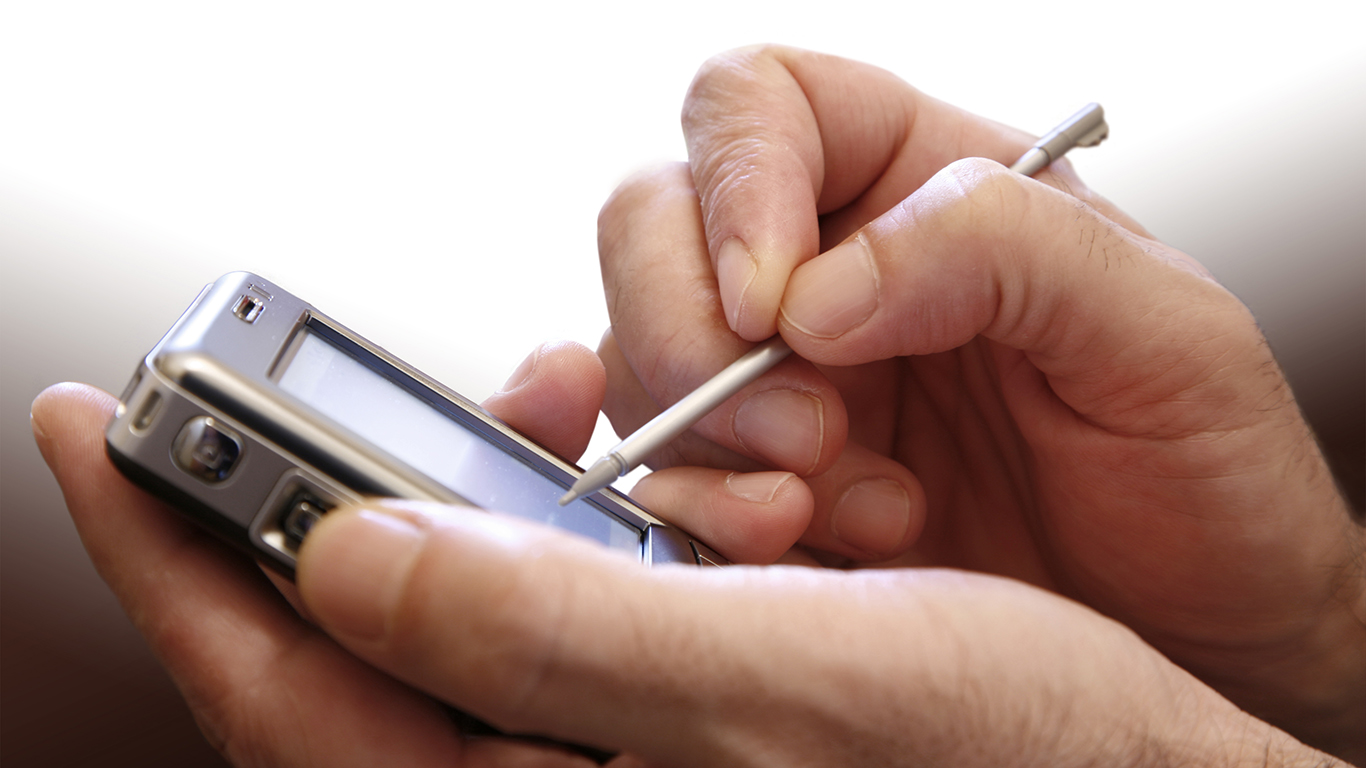
Personal digital assistant
> Year invented: 1992
Before there were apps to remind you of tasks and to manage your days — as well as apps to organize all other apps you have downloaded on your phone — there were PDAs. These handheld PCs or Palms, as PDAs were also known (after the company that invented them), had it all — WiFi, pen-based keyboards, GPS antennas, even voice recognition. They could even send a fax.
IBM Simon
> Year invented: 1992
The Simon was the first smartphone. It was invented in 1992, long before people even started using the term “smartphone.” It was the world’s first touchscreen phone, the iPhone would come out 15 years later, in 2007. Simon became available for sale in 1994. Yes, it could send emails. It was the beginning of modern-day super smart gadgets.
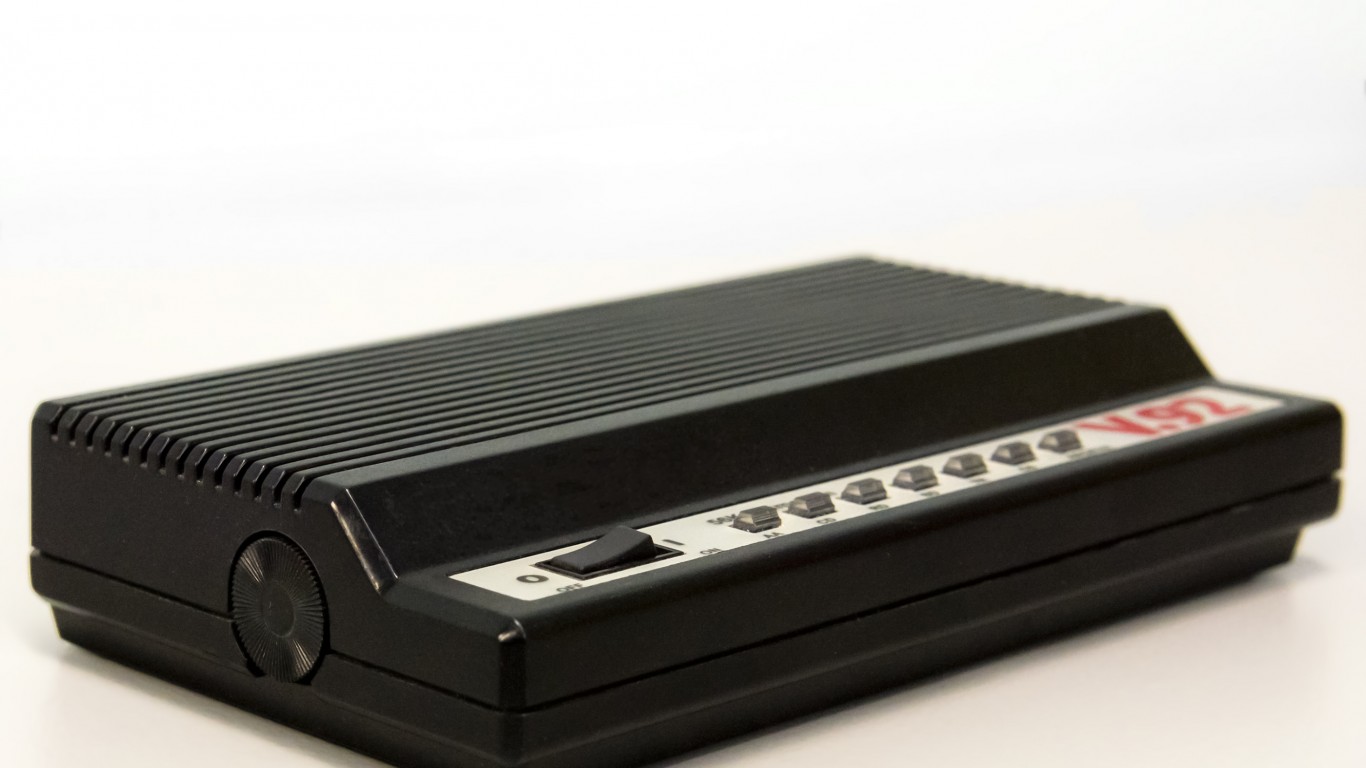
Dial-up modem
> Year invented: 1994
Before cable internet and WiFi Americans used their analog telephones to connect to the internet. After dialing a number, the computer would use the modem, short for modulator-demodulator, to send and receive information to another computer. The downside was that the connection was often slow and often interrupted. Of course, the phone could not be used at the same time to make regular calls.
[in-text-ad-2]

PlayStation
> Year invented: 1994
The first PlayStation, which was released in 1994 in Japan, had a CD drive. The controllers had four shoulder buttons instead of the standard two. The Sony PlayStation was the first video game console to sell over 100 million units worldwide.
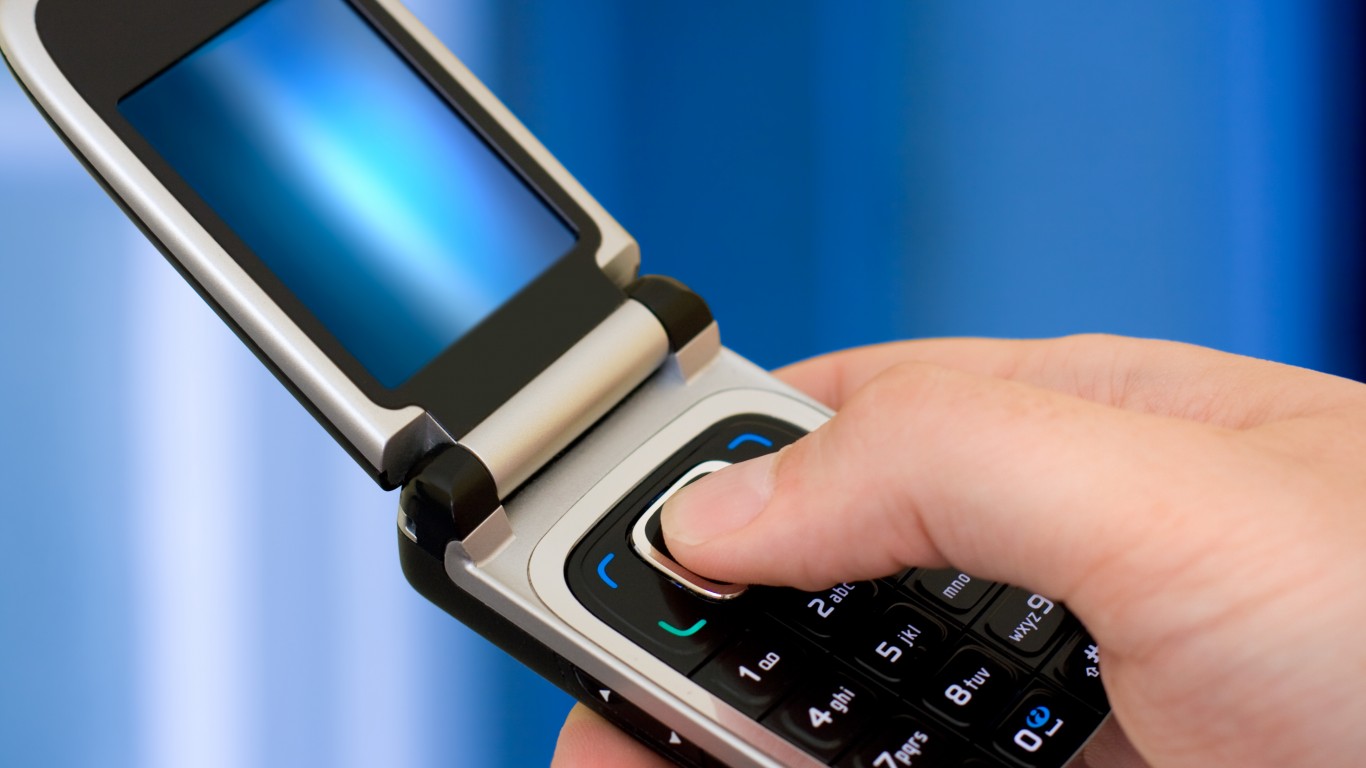
Flip phone
> Year invented: 1996
The first flip phone, Motorola’s StarTAC, came out in 1996. This kind of cell phone became a hit with consumers until the smartphone came along, and offered a lot more features. But there seems to be a revival of the old trend. People tired of being swamped with all kinds of information all the time are going old school and getting flip phones again.
[in-text-ad]

Tamagotchi
> Year invented: 1996
The Tamagotchi was the world’s virtual pet. It sold more than 40 million units, 12 million in the United States and Canada alone. The Tamagotchi’s creator, Aki Maita, was looking for the ideal pet companion to fit into her busy everyday life and tiny apartment.
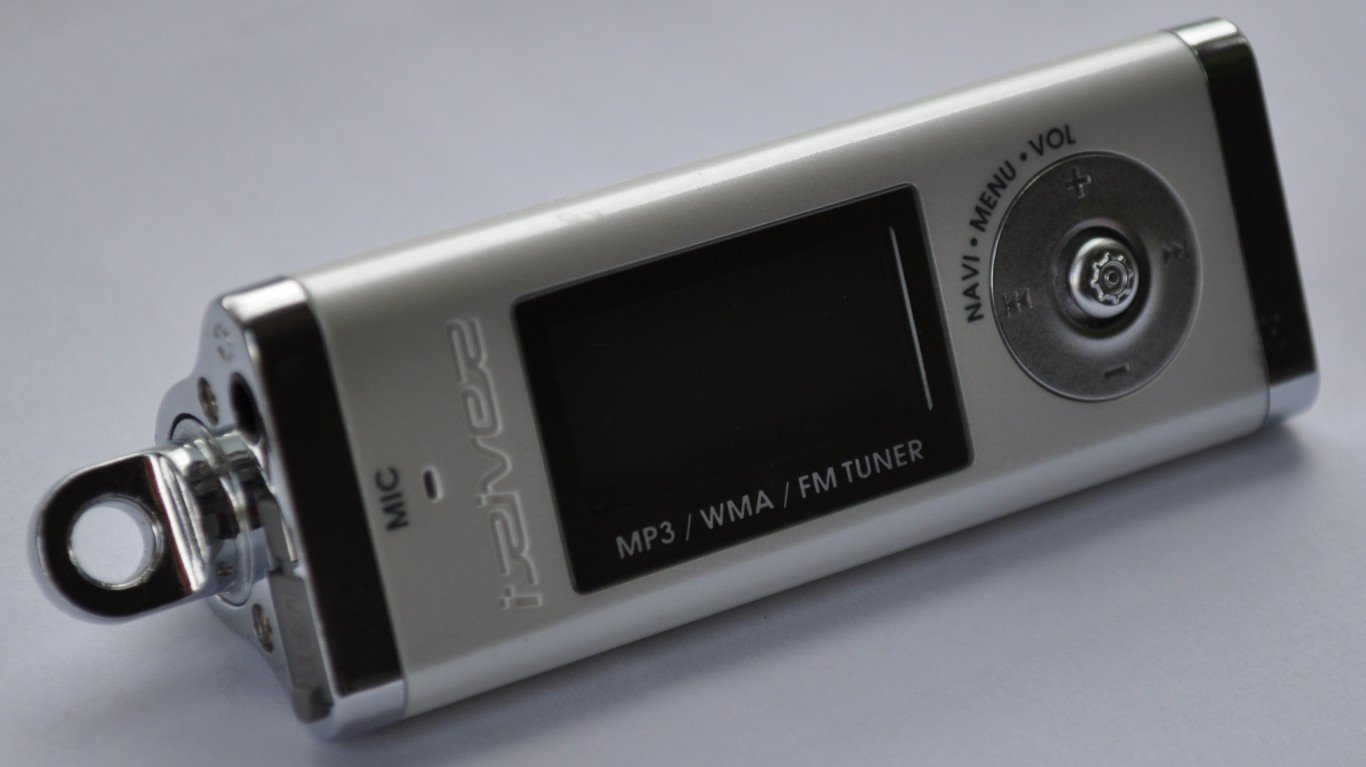
MP3 player
> Year invented: 1997
MP3 is short for MPEG Audio Layer III. It simply is an audio compression device that makes a music file small enough to fit in the device without sacrificing sound quality. It took a few years for the device to take off. Invented in the early 1990s, it became very popular around 1997. It was smaller than a Walkman, and lighter, too. The music device and format is now obsolete, replaced by the cell phone. Even the MP3’s creators declared it dead in 2017.

E-readers
> Year invented: 1997
Sony was the first company to release an e-reader using a so-called microencapsulated electrophoretic display, commonly referred to as e-ink. E-ink technology, which mimics ink on paper that is easy on the eyes and consumes less power, had been around since the ’70s (and improved in the ’90s), but the innovation of e-readers had to wait until after the broader demand for e-books emerged. Sony was quickly overtaken by Amazon’s Kindle after its 2007 debut. The popularity of e-readers has declined with the emergence of tablets and smartphones, but they still command loyalty from bookworms worldwide.
[in-text-ad-2]

BlackBerry
> Year invented: 1999
Some people forget there was a smartphone before the iPhone but in 1999 the first version of the BlackBerry was released. It looked like a pager with a keyboard. You could check your email and do limited HTML browsing. The BlackBerry 5810 was the first BlackBerry phone, though it needed a headset.
iPod
> Year invented: 2001
Apple’s simple digital music player could store 5GB of music. Some people were skeptical of the device as they thought it strange for a tech company to sell music gadgets. Apple has sold more than 400 million units of the iPod and its different versions.
[in-text-ad]

E-cigarettes
> Year invented: 2006
While components of the technology have existed for decades, the first modern e-cigarette was introduced in 2006. Since then, the devices have become wildly popular as an alternative to traditional cigarettes, and new trends, such as the use of flavored juice, have contributed to the success of companies like Juul. There remains a great deal of uncertainty and risk surrounding the devices, with an increasing number of deaths and injuries linked to vaping. In early 2020, the FDA issued a widespread ban on many flavors of cartridge-based e-cigarettes, in part because those flavors are especially popular with children and younger adults.

iPad
> Year invented: 2010
Apple’s iPad created a new product category that took the public by storm in 2010. The device was easy on the fingers and did not require a stylus, in contrast to previous tablets. The iPad also did not need a lot of maintenance. Apple sold 4.2 million iPads in the first quarter after its launch, becoming one of the fastest-selling gadgets in history.
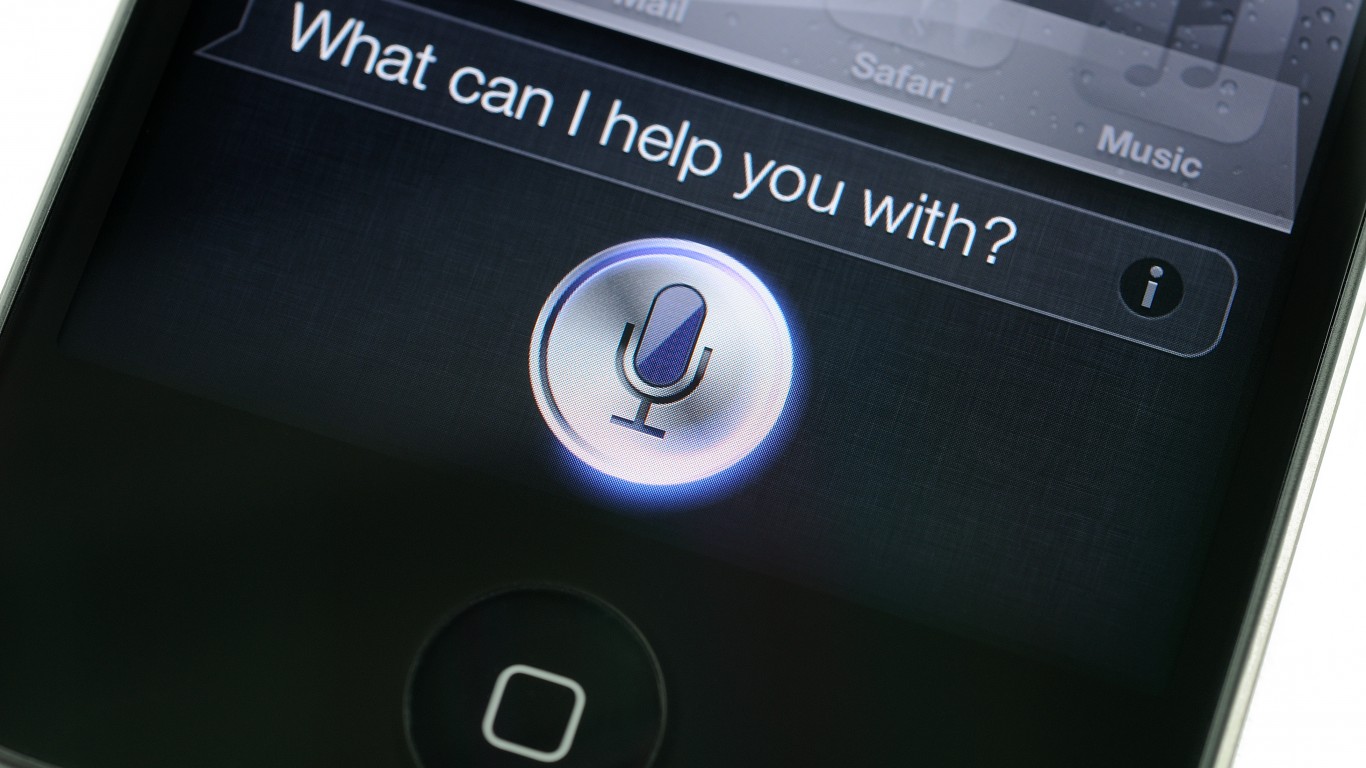
Siri
> Year invented: 2011
Apple unveiled the digital assistant in October 2011. The AI-powered assistant can help with everything from checking the weather to setting reminders and calling and texting people. She can also answer pretty much anything you ask her.
[in-text-ad-2]
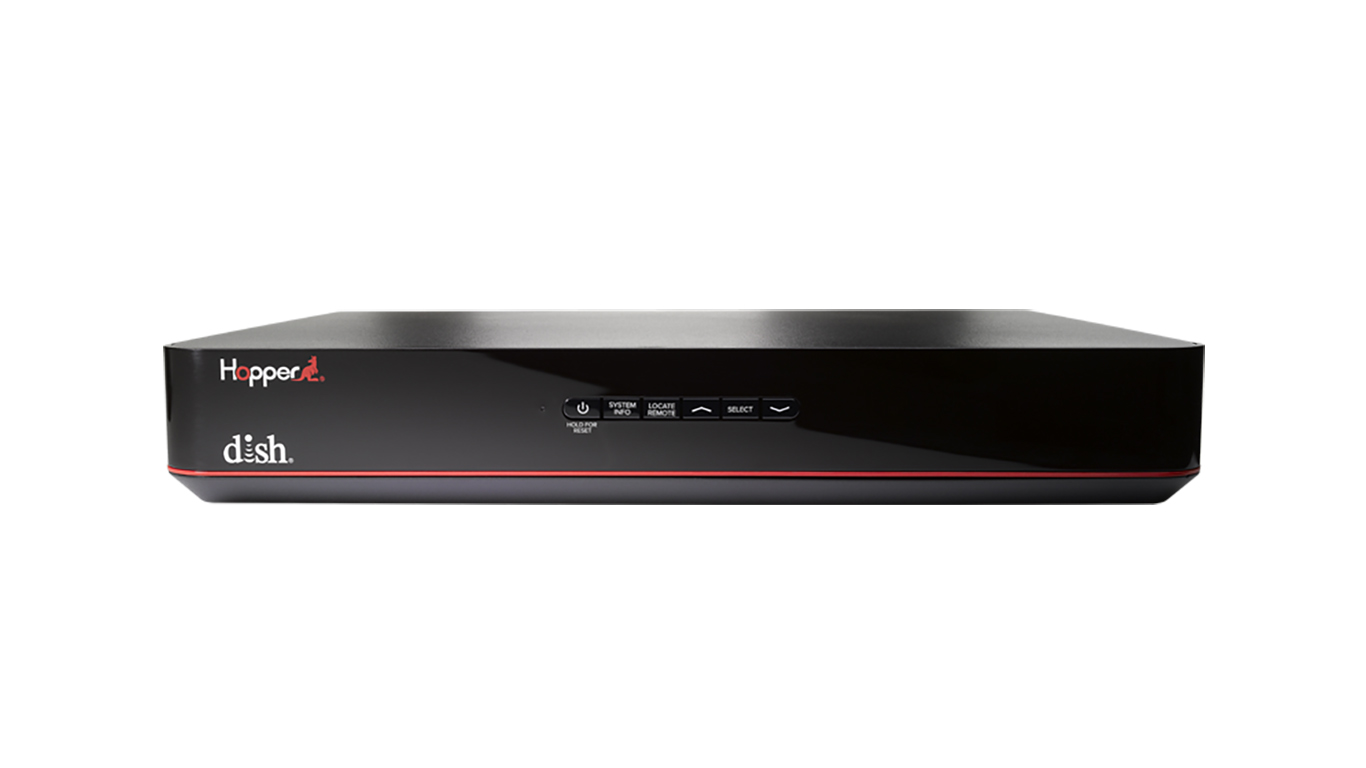
The Hopper
> Year invented: 2012
The Hopper is a digital video recording (DVR) device that stores recordings and provides playback on any TV. It has a disk drive of 2 trillion bytes, or 2 terabytes, enough to save a season’s worth of a series and binge-watch later. An added bonus is that the device allows users to skip over advertisements, which prompted complaints from television networks. Dish caved on the ad issue but won other concessions, such as the ability to stream content from the networks.
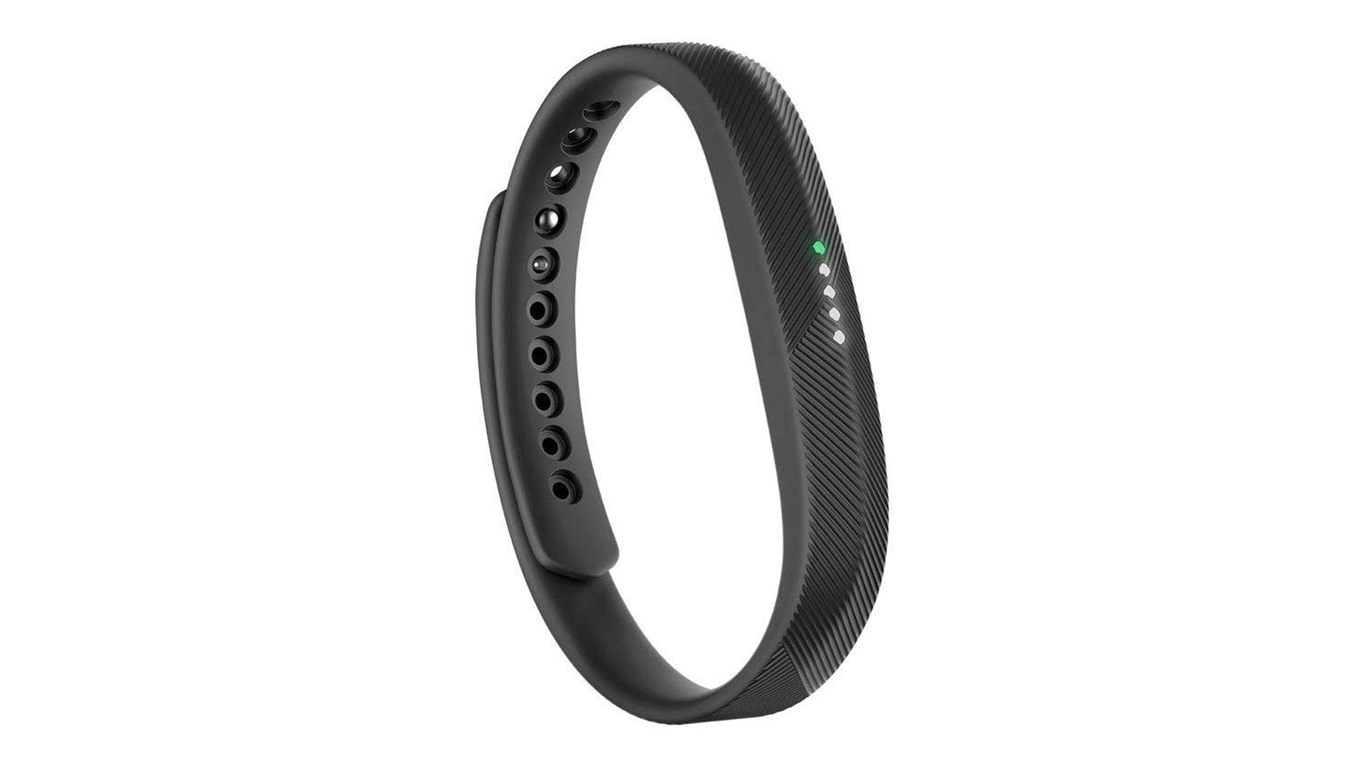
Flex
> Year invented: 2013
The market for wearable technology shifted into a higher gear in 2013, when Fitbit’s Flex was introduced to consumers. The Fitbit Flex is an activity tracker that is worn on the wrist and is designed to encourage the wearer to live a more healthful lifestyle. It tracks the number of steps users take and calories burned. It became a popular Christmas gift in 2013. It was priced at $99 and, in 2015, Fitbit sold 20 million of them. The category has since become crowded with major companies such as Garmin and Apple developing competing products.
[in-text-ad]
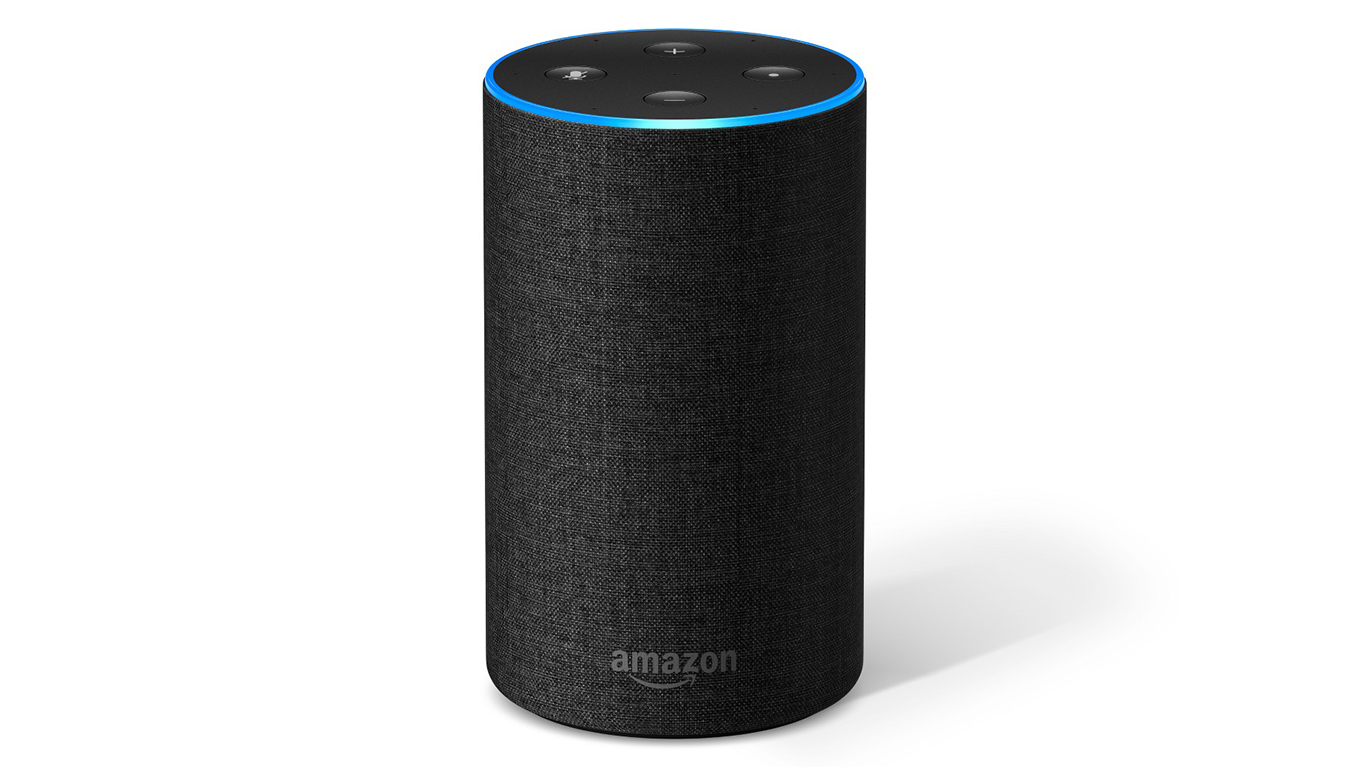
Echo
> Year invented: 2014
Amazon’s Echo products have been key in mainstreaming artificial intelligence and AI assistants. People command the devices to play music, set alarms and reminders, make video calls, and even tell jokes. Amazon said in January that it had sold more than 100 million devices enabled with the Alexa voice. There are concerns that Amazon is using the device to gather information about the users without their knowledge.
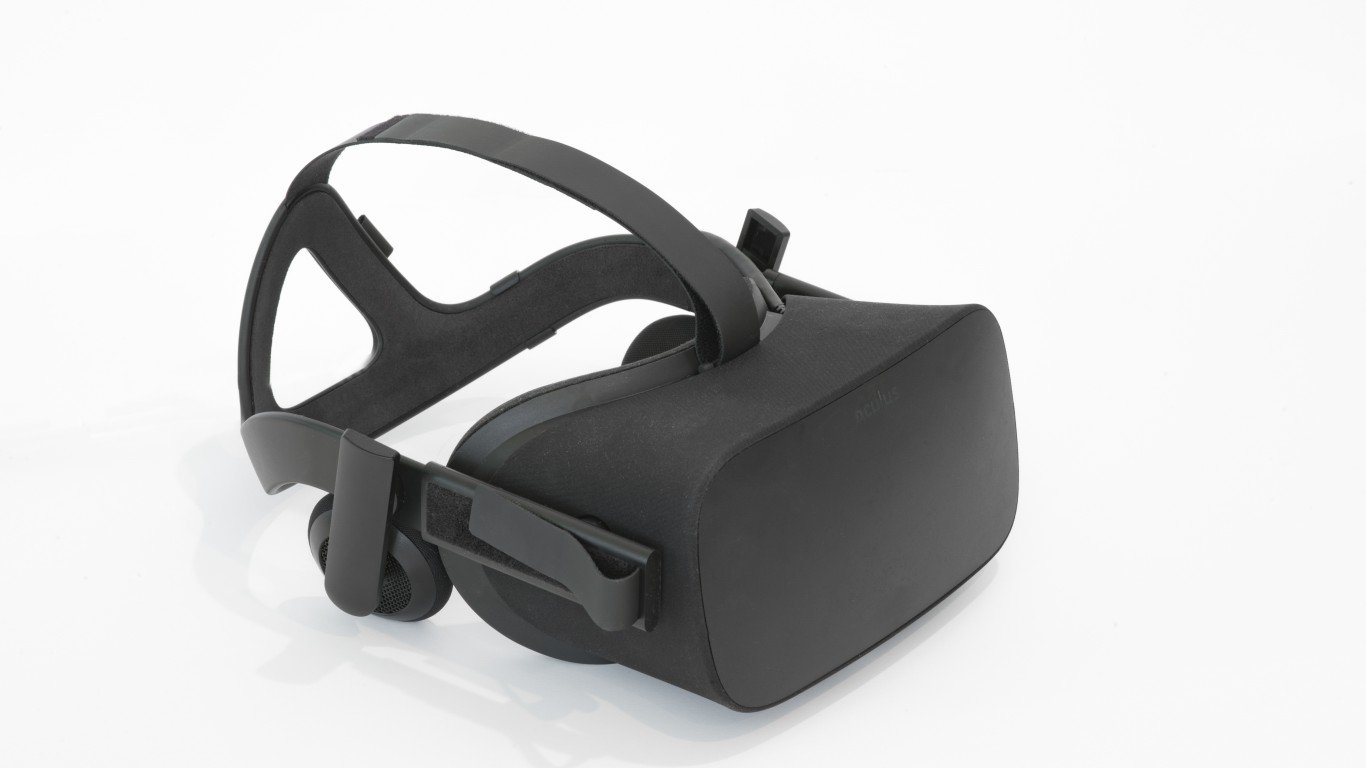
Oculus Rift
> Year invented: 2016
The Oculus Rift headset set the stage for modern virtual reality technology. The headset, which owes its beginnings to Palmer Luckey, who created it in his parents’ garage in Long Beach, California, was the first product to fully demonstrate the potential possibilities of virtual reality. VR is a big part of the gaming sector and is used as a learning aid in medicine and engineering.

Folding screens
> Year invented: 2019
Huawei’s Mate X folding screen phone wowed attendees at the Mobile World Congress in Barcelona earlier this year with its 8-inch, plastic organic light-emitting diode (OLED) display that folded outward, not inward. The Mate X provides a tablet-sized screen when extended. The device will set you back a bit — its price tag is about $2,600.
Credit card companies are handing out rewards and benefits to win the best customers. A good cash back card can be worth thousands of dollars a year in free money, not to mention other perks like travel, insurance, and access to fancy lounges. See our top picks for the best credit cards today. You won’t want to miss some of these offers.
Flywheel Publishing has partnered with CardRatings for our coverage of credit card products. Flywheel Publishing and CardRatings may receive a commission from card issuers.
Thank you for reading! Have some feedback for us?
Contact the 24/7 Wall St. editorial team.